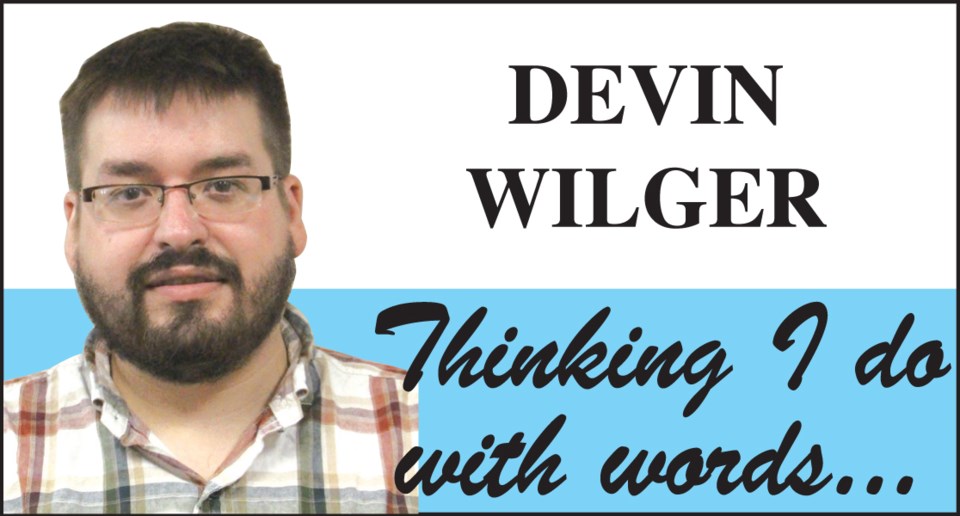In this spot I’ve talked about how I like shooting film before. Maybe some people are interested in trying it out. In this space, I’m going to answer questions people ask.
The first is always asking where I get film. The response is sometimes “depends on the film” but in my case it’s mostly online, because I like trying out new films and I’m drawn to stuff that is not commonly sold in grocery stores. But believe it or not, film is still sold in grocery stores and pharmacies, there are a few businesses in town where I’ve found rolls of Kodak Gold waiting for purchase. It’s a great way to get started if you have a camera you just found that you want to give a shot.
Where do I get it developed? I either go to Regina, where London Drugs still does same-day processing for colour film and Don’s Photo can send away black and white or special formats, or I ship it to Downtown Photo in Toronto when I have an especially big order. I could, and should, do it myself, but haven’t learned how yet and am paranoid I’ll screw it up. I’ll learn eventually. If there’s a place in town that does it I would use them, but I haven’t found it yet.
Of course, if you’ve found a camera, whether in your own basement or a thrift store, you might wonder about what film it uses. Maybe you want to try this out for yourself. Here’s a quick rundown of film I know a bit about.
The most common film is 35mm, the film in a canister that a lot of people think about when they think film. The majority of my cameras are 35mm, of course, and it’s still easy to find and everyone who still develops it will handle it. For a beginner, 35mm is best.
The next most common would be 120, also known as medium format. It’s a roll film, so it’s on a small roll and backed with paper. The handy thing about this is it doesn’t have to be rewound at the end of the roll, which means I have never had to go to a dark closet to deal with a medium-format camera where the rewind motor has broke. The other advantage is that the negative is much bigger, so you get more detail. The disadvantages are that scanning it is more annoying, it’s a bit more expensive, and you get fewer pictures on a roll.
After 120 is 620, which is 120 on a different spool, so they don’t fit in the same spots. This format was used in the Kodak Brownie line, and if you collect cameras you will, eventually, own several Kodak Brownie cameras whether you like it or not. I own five, I have deliberately purchased zero. The Film Photography Project still makes supplies for 620 film, including their own spools and re-rolling 120 film onto them. The Film Photography Project is generally great.
On the other end of the spectrum is 110, which is used in tiny pocket cameras and is on a little self-contained cartridge. The cartridge is really nifty, but a smaller negative means less detail, and most of the cameras that used it were cheap, so 110 is associated with poor image quality. Not many people make it anymore - just Lomography, which is at least easy to find. It’s also really annoying to scan because none of the major scanner manufacturers think anyone is going to work with it. But my first camera used 110 so I have some affection for it.
Another format that is annoying which I have affection for is 127, which is a roll film that is smaller than 120 and used in a camera that my grandmother gave me before she died. That means I still want to use it even though one company in Japan makes it, barely anyone actually develops it and it’s more expensive than it’s worth.
There are also films that are genuinely dead, like 616, which is slightly larger than 120 and nobody makes at all. People do make parts to allow you to use 120 film in a 616 camera, but I look at the lone 616 camera I own and I suspect that the image quality is not going to be worth ordering special parts. There are other dead formats out there like 126 and APS, and while often people go through the effort of making the cameras usable, whether it’s worth it depends on the user.
That’s a fairly brief overview of what I use and collect, which doesn’t even touch on instant film - since I know nothing about it at all - or things like large format since I don’t own a camera that uses it.
The important lesson through all of this is that if you find an old camera, and it still works, you might be able to still use it, so you should try it out. It might not always be easy to do, but sometimes it means more than just the film that goes through it.



